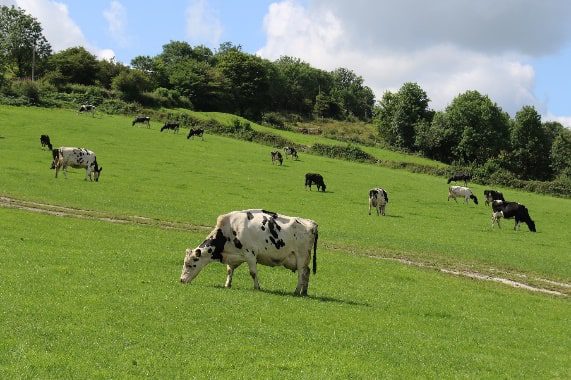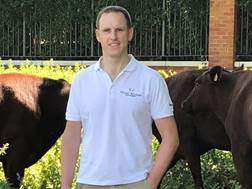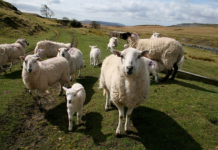
Rumen function and energy supply are paramount to protecting butterfats and fertility during spring grazing.
As dairy herds are turned out for spring grazing, producers must balance rumen function and energy demands to avoid butterfat depression and fertility issues, says Dr Richard Kirkland, ruminant nutritionist for Volac Wilmar Feed Ingredients.
“Rumen function is put under a lot of pressure at turnout as cows go from having a controlled ration that is balanced in fibre and starch to a more variable forage base of grazed grass,” explains Dr Kirkland. “While the diet transition alone is enough to cause challenges to the rumen that can have an immediate impact on milk production, early grass growth may be akin to rocket fuel and is expected to be rapidly fermentable.”
High in energy, more rapidly-fermentable forage can cause disruptions in rumen pH and pass more quickly through the digestive system. These conditions lead to an increased risk of acidosis and along with the high oil loads pose a significant threat for milk fat depression, making supplement choice of paramount importance.
Fat supplementation in buffer rations help meet energy needs
Variable spring grazing conditions make it harder for energy supply to be maximised with a drop in fertility as a consequence. In perfect grazing conditions it is possible to support 25+ litres of milk per day, but dry matter and energy intakes can be significantly reduced in wet, overcast conditions.

“Especially for spring calvers, maximising energy intake is essential during the early part of the grazing season as cows’ have a greater nutrient demand to support milk production and body condition ahead of breeding within a short window of time,” says Dr Kirkland.
During early lactation, cows cannot eat enough to meet the high energy demands of milk production and enter a state of ‘negative energy balance’, using energy from body fat stores to support the genetic drive for milk production, and lose condition. Research indicates a fall-off in conception rate of around 10% for each 0.5-unit loss in condition through this period.
To minimise this effect, composition of buffer feed needs to be carefully considered says Dr Kirkland. High-fibre supplements such as citrus pulp and soya hulls will provide a better balance in the rumen and in conjunction with a rumen-protected fat supplement can provide the greatest response in milk fat as observed in research studies at the University of Nottingham.
While it may work out on paper, supplementation with rapidly-fermentable carbohydrates such as wheat or barley as energy sources offer greater challenges and increase risk of acidosis and making the fall in milk fat worse.
“Rumen-protected fat supplements have around 2.5-times the energy content of cereals, making them ideal to help maintain energy supply through variable springtime grazing conditions without the undesirable rumen effects we see from starchy cereals through the transition from the winter diet to the spring grazing scenario,” he says.
Using strategic fat supplementation to optimise milk contracts
According to Dr Kirkland, individual fatty acids impact cow performance and influence partitioning of nutrients between milk and body fat stores (cow condition). Therefore, fat supplements should be selected based on the blend of fatty acids they contain depending on the stage of lactation, individual farm challenges and requirements to maximise returns from specific milk contracts.
To support both fertility and milk production during this time, Dr Kirkland advises feeding a rumen-protected fat supplement with a research-proven ratio of C16:0 (palmitic acid) and C18:1 (oleic acid) to strategically influence the partitioning of nutrients between milk and body condition.
“Fatty acids, the building blocks of fat supplements, influence the partitioning of nutrients to specific areas of cow performance, enabling producers to choose supplements according to milk contract requirements at particular stages in the lactation cycle,” explains Dr Kirkland.
During the early lactation period C18:1 is a key fatty acid, increasing partitioning of energy and nutrients to improve body condition as well as improved development of fertilised eggs. However, given the challenges of early spring grass, products containing higher levels of C16:0 can be considered as effective ingredients to increase milk fat production.
“Careful choice of supplements is essential at grazing to provide those vital megajoules of energy in a form that stimulates the rumen and milk fat production,” Dr Kirkland concludes. “Selecting a rumen-protected fat supplement, farmers can support both fertility and milk production performance while helping ensure energy demands are being met in a safe way.”
Help keep news FREE for our readers
Supporting your local community newspaper/online news outlet is crucial now more than ever. If you believe in independent journalism, then consider making a valuable contribution by making a one-time or monthly donation. We operate in rural areas where providing unbiased news can be challenging. Read More About Supporting The West Wales Chronicle
























